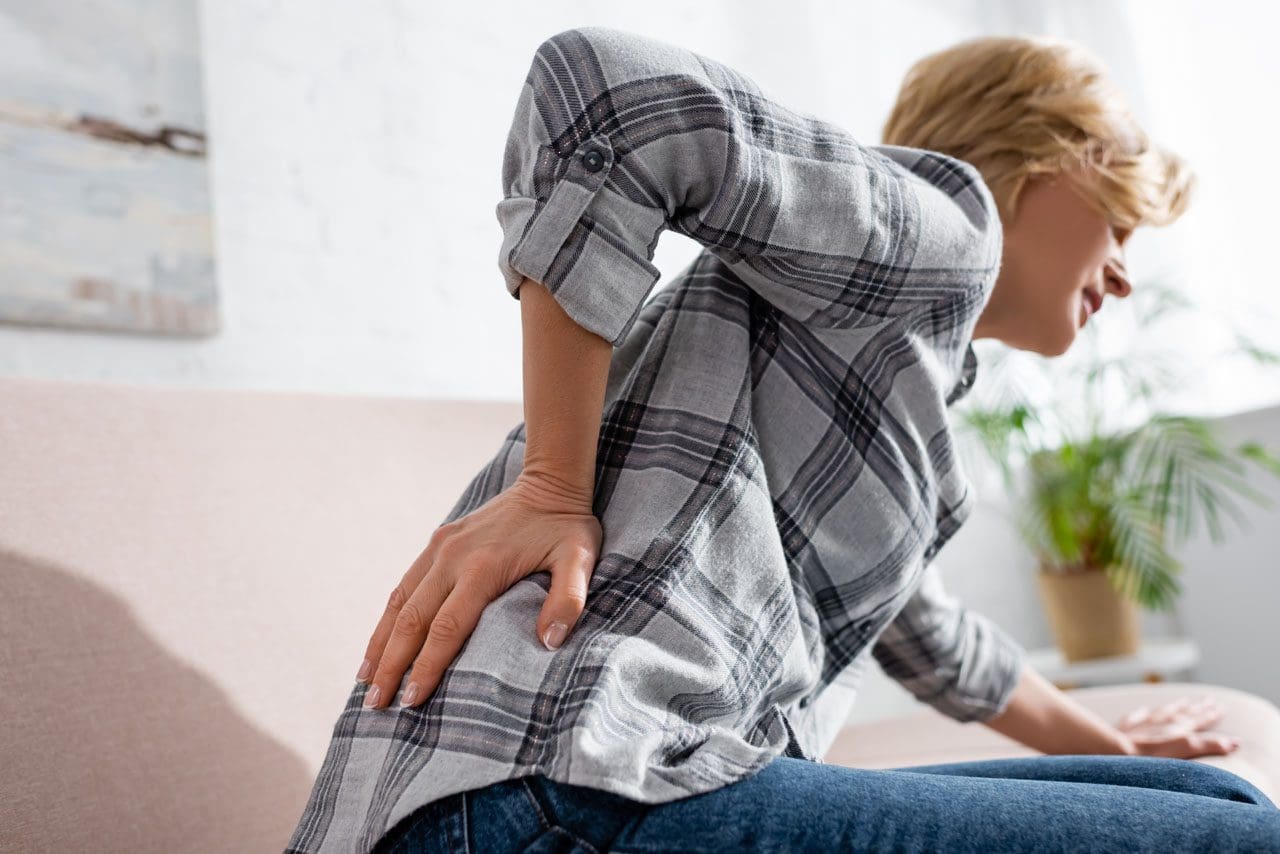Tight Hip Flexors and How To Release
- Lie on back on a table or bench
- Let the lower part of the legs hang off the side at the knees
- Pull one knee up to the chest while keeping the head, shoulders, back, and hips in contact with the table/bench
- The other leg will stay in contact with the table/bench with the knee at a 90-degree angle if the hip flexors are not tight
- If they are tight, the other leg will come up from the table/bench, causing the knee to come out of the 90-degree angle
- Perform on both sides, because one hip flexor could be tighter than the other
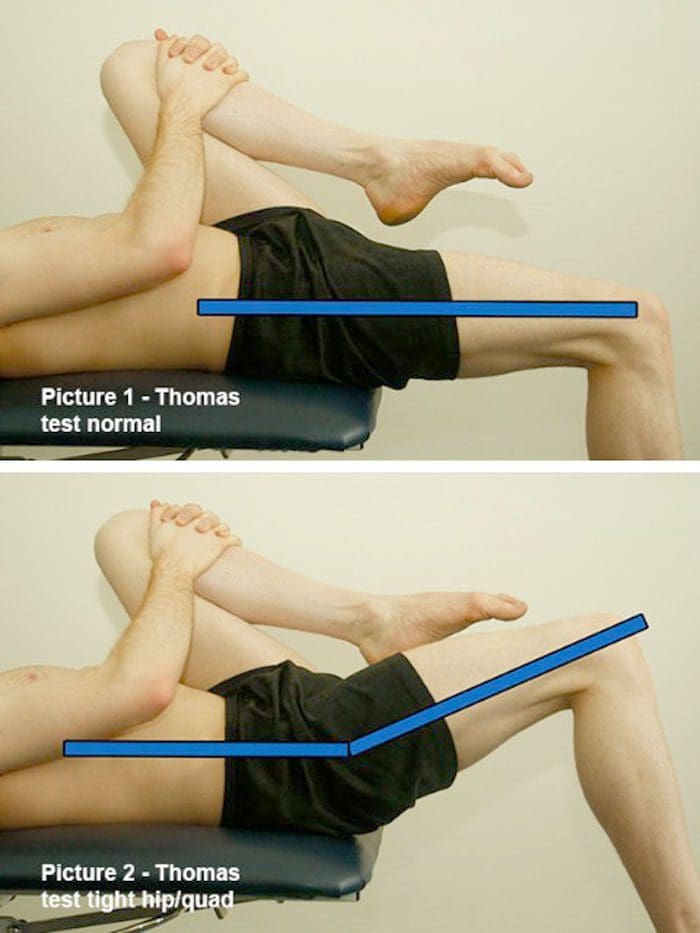
Table of Contents
Why Hip Flexors Become Tight
Figuring out what’s making them so tight varies from person to person. Some individuals are more susceptible to tight hip flexors than others. Here are common reasons why individuals experience discomfort, soreness, and pain:- Sitting for a long time shortens and weakens the flexors
- A shifted pelvis could be an anterior or posterior pelvic tilt
- Uneven hips can cause tightness on one side
- Poor posture can lead to standing or leaning on one hip
- Sleeping too much on one side
- Running or exercising without regular stretching especially of the hips
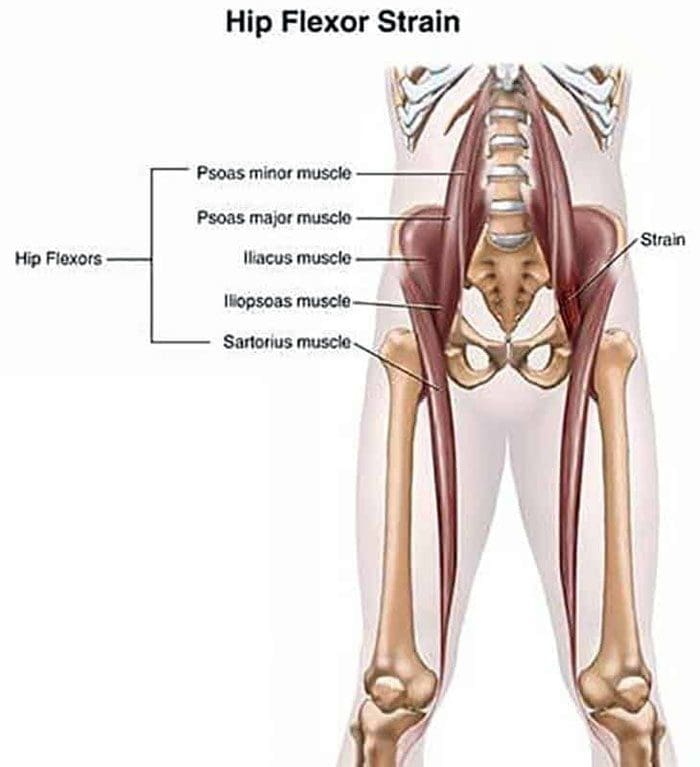
Tight Hip Flexor Symptoms
Many are surprised by how tight hip flexors can affect the rest of the body. This is because of the many different muscles in the hip flexor group. They help lift the leg at the hip, help stabilize the spine, and can affect the neck and shoulder area.- Tightness in the upper groin/hip area
- Pain/tightness in the glutes
- Tight hamstrings
- Pain/tightness in the lower back when standing up
- Trouble standing up straight
- Pain/tightness in the neck
Releasing Tight Hips
The test is a great way to determine if the hip flexors are tight. Before attempting to stretch the hip flexors, it is key to determine that the flexors are tight or weak. If the hip flexors are not tight, stretching them will not help. Instead, they need to be strengthened. Individuals can confuse tight hip flexors with weak ones and become frustrated when there is no relief after stretching.Stretches
Here are some easy stretches for the hip flexors.Butterfly Stretch
- Sit on the floor with the heels and toes of the feet pressed together
- The weight of the knees as they open and move forward to the floor will stretch the hips
- For a greater stretch, gently press down on the inside of the knees
- Hold for 30 seconds to a minute
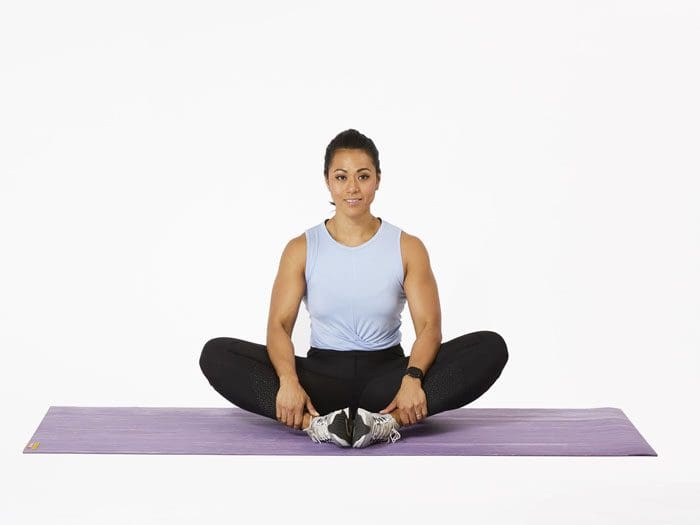
Chair Figure 4 Stretch
- Sit in a chair
- Raise one leg and place the ankle on the opposite knee
- Straighten the back and then hinge the torso forward
- The stretch will be felt in the hip and glute
- Hold for one minute
- Switch legs and repeat
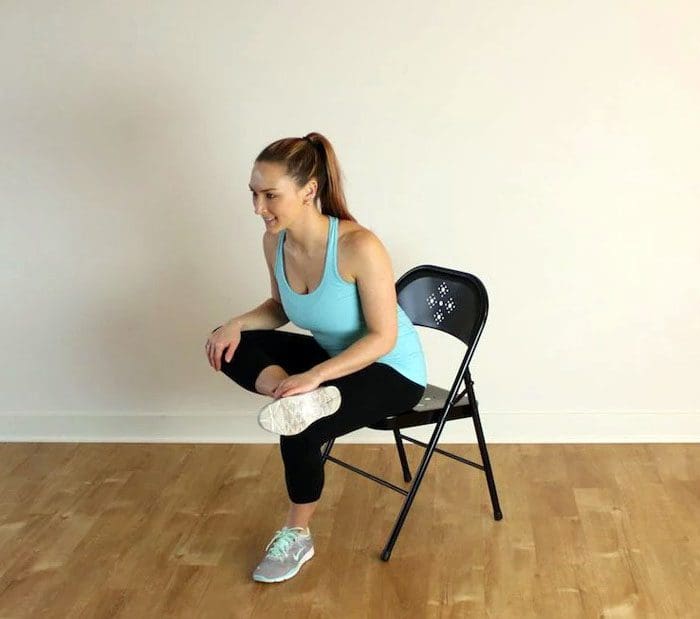
Kneeling Hip Flexor Stretch
- Kneel down with one leg bent at 90-degrees in front and the other at 90-degrees underneath
- Keep the back straight
- Squeeze the glutes
- Tuck the pelvis forward
- Maintain this position, lean forward gently into the forward leg
- The stretch will be felt along the hip and front of the underneath leg
- Hold for 15 to 30 seconds
- Repeat 3 to 5 times
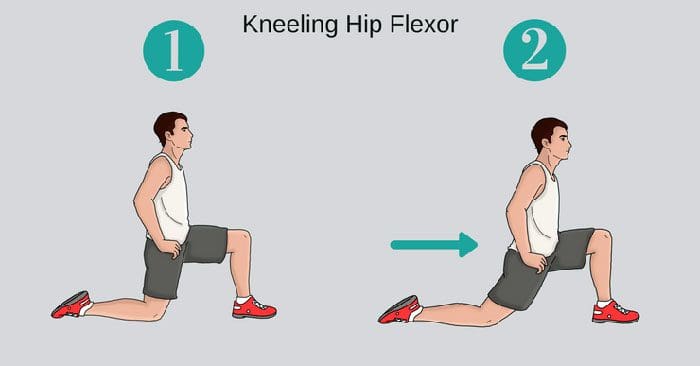
Chiropractic Care To Loosen Tight Hips
If dealing with pain in the hips when stretching or sitting, there could be something other than tight hip flexors, or in addition to tight flexors. If exercising or stretching, causes discomfort/pain, stop the activities and contact a chiropractor for a possible hip adjustment. Chiropractic medicine specializes in the entire musculoskeletal system.Massage
Combined with a hip adjustment, massage therapy will help relieve pain, stiffness and improve circulation. Many find relief from a massage after an adjustment, while others receive a massage before the adjustment.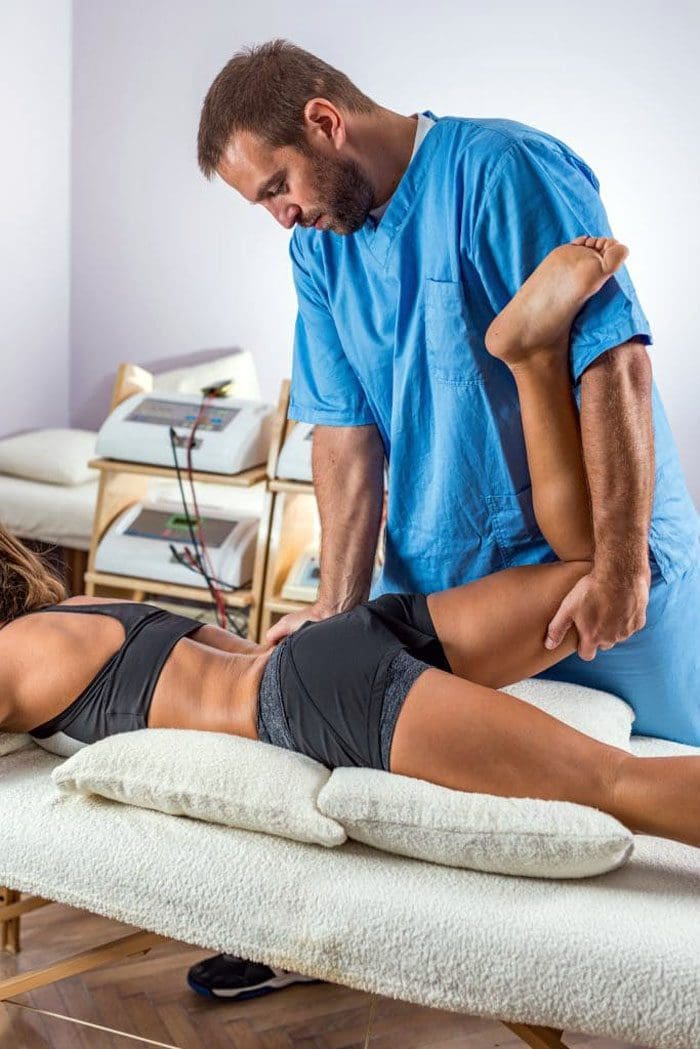
Hip Flexors Cracking
A less common issue with hip flexors is cracking or popping during activity/s. Individuals can experience this while they are exercising or running and is usually caused by a tendon or muscle sliding over the bone. It can be difficult to determine the cause of the cracking/popping without seeing a medical professional. In some cases, it could be gas escaping the hip joint, while in others, it could be an issue that needs to be addressed by strengthening, massaging, and working out the muscle or tendon.Strengthening Weak Hip Flexors
For those with weak hip flexors that is causing the discomfort, here are some exercises:Single-Leg Stance
- Stand on one leg
- Keep the thigh of the other leg lifted parallel with the ground and the knee at 90-degrees
- Hold for 30 seconds
- Switch sides
- Repeat 6 to 8 times
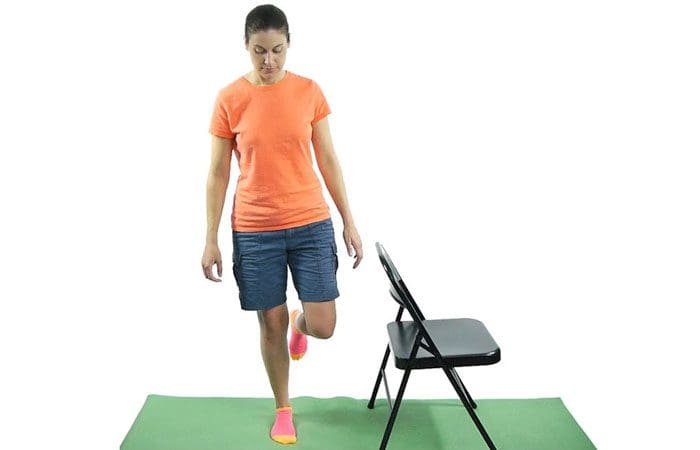
Knee Raises
- Lift each knee as high as possible
- Try to perform quickly but with control in alternating movements
- Continue for 30 to 60 seconds
- Repeat 3 to 5 times
Body Composition
Physical activity decreased
Physical inactivity is a primary factor in the progression of sarcopenia. Regular resistance exercise can help maintain muscle mass and help build muscular strength. Individuals that are more sedentary can exacerbate the effects of sarcopenia.Decreased motor neurons
Aging comes with a loss of motor neurons caused by cell death. This leads to a decrease in muscle fiber numbers and size. This decrease leads to:- Impaired performance
- Reduction in functional capacity
- Decreased ability to perform everyday chores/tasks
Increased Pro-inflammatory Cytokines
Poor diet and exercise are known to promote and increase the storage of visceral fat. This type of fat produces pro-inflammatory cytokines which can accelerate muscle breakdown. Obesity and muscle weakness are associated with high levels of pro-inflammatory cytokines. This is made worse by decreased muscle mass and plays a role in the progression of sarcopenia.Disclaimer
The information herein is not intended to replace a one-on-one relationship with a qualified health care professional, licensed physician, and is not medical advice. We encourage you to make your own health care decisions based on your research and partnership with a qualified health care professional. Our information scope is limited to chiropractic, musculoskeletal, physical medicines, wellness, sensitive health issues, functional medicine articles, topics, and discussions. We provide and present clinical collaboration with specialists from a wide array of disciplines. Each specialist is governed by their professional scope of practice and their jurisdiction of licensure. We use functional health & wellness protocols to treat and support care for the musculoskeletal system’s injuries or disorders. Our videos, posts, topics, subjects, and insights cover clinical matters, issues, and topics that relate to and support, directly or indirectly, our clinical scope of practice.* Our office has made a reasonable attempt to provide supportive citations and has identified the relevant research study or studies supporting our posts. We provide copies of supporting research studies available to regulatory boards and the public upon request. We understand that we cover matters that require an additional explanation of how it may assist in a particular care plan or treatment protocol; therefore, to further discuss the subject matter above, please feel free to ask Dr. Alex Jimenez or contact us at 915-850-0900. Dr. Alex Jimenez DC, MSACP, CCST, IFMCP, CIFM, CTG* email: coach@elpasofunctionalmedicine.com phone: 915-850-0900 Licensed in Texas & New MexicoReferences
Blue Cross Blue Shield. 2015.“A study of cost variations for knee and hip replacements in the U.S.” www.bcbs.com/the-health-of-america/reports/study-of-cost-variations-knee-and-hip-replacement-surgeries-the-us Centers for Disease Control and Prevention. 2017. “Vital Signs: Prevalence of Doctor Diagnosed Arthritis and Arthritis-Attributable Activity Limitation. The United States, 2013-2015. www.cdc.gov/mmwr/volumes/66/wr/mm6609e1.htm Spine. 1983. “Hip-Spine Syndrome.” pubmed.ncbi/nih.gov/6623198 Anesthesia & Analgesia. 2005. “Sacroiliac Joint Pain: A comprehensive review of anatomy, diagnosis, and treatment.” pubmed.ncbi.nim.nih.gov/1624408.Post Disclaimer
Professional Scope of Practice *
The information herein on "Tight Hip Flexors and How To Release" is not intended to replace a one-on-one relationship with a qualified health care professional or licensed physician and is not medical advice. We encourage you to make healthcare decisions based on your research and partnership with a qualified healthcare professional.
Blog Information & Scope Discussions
Welcome to El Paso's Wellness blog, where Dr. Alex Jimenez, DC, FNP-C, a board-certified Family Practice Nurse Practitioner (FNP-C) and Chiropractor (DC), presents insights on how our team is dedicated to holistic healing and personalized care. Our practice aligns with evidence-based treatment protocols inspired by integrative medicine principles, similar to those found on dralexjimenez.com, focusing on restoring health naturally for patients of all ages.
Our areas of chiropractic practice include Wellness & Nutrition, Chronic Pain, Personal Injury, Auto Accident Care, Work Injuries, Back Injury, Low Back Pain, Neck Pain, Migraine Headaches, Sports Injuries, Severe Sciatica, Scoliosis, Complex Herniated Discs, Fibromyalgia, Chronic Pain, Complex Injuries, Stress Management, Functional Medicine Treatments, and in-scope care protocols.
Our information scope is limited to chiropractic, musculoskeletal, physical medicine, wellness, contributing etiological viscerosomatic disturbances within clinical presentations, associated somato-visceral reflex clinical dynamics, subluxation complexes, sensitive health issues, and functional medicine articles, topics, and discussions.
We provide and present clinical collaboration with specialists from various disciplines. Each specialist is governed by their professional scope of practice and their jurisdiction of licensure. We use functional health & wellness protocols to treat and support care for the injuries or disorders of the musculoskeletal system.
Our videos, posts, topics, subjects, and insights cover clinical matters, issues, and topics that relate to and directly or indirectly support our clinical scope of practice.*
Our office has reasonably attempted to provide supportive citations and has identified the relevant research studies or studies supporting our posts. We provide copies of supporting research studies available to regulatory boards and the public upon request.
We understand that we cover matters that require an additional explanation of how they may assist in a particular care plan or treatment protocol; therefore, to discuss the subject matter above further, please feel free to ask Dr. Alex Jimenez, DC, APRN, FNP-BC, or contact us at 915-850-0900.
We are here to help you and your family.
Blessings
Dr. Alex Jimenez DC, MSACP, APRN, FNP-BC*, CCST, IFMCP, CFMP, ATN
email: coach@elpasofunctionalmedicine.com
Licensed as a Doctor of Chiropractic (DC) in Texas & New Mexico*
Texas DC License # TX5807
New Mexico DC License # NM-DC2182
Licensed as a Registered Nurse (RN*) in Texas & Multistate
Texas RN License # 1191402
ANCC FNP-BC: Board Certified Nurse Practitioner*
Compact Status: Multi-State License: Authorized to Practice in 40 States*
Graduate with Honors: ICHS: MSN-FNP (Family Nurse Practitioner Program)
Degree Granted. Master's in Family Practice MSN Diploma (Cum Laude)
Dr. Alex Jimenez, DC, APRN, FNP-BC*, CFMP, IFMCP, ATN, CCST
My Digital Business Card


